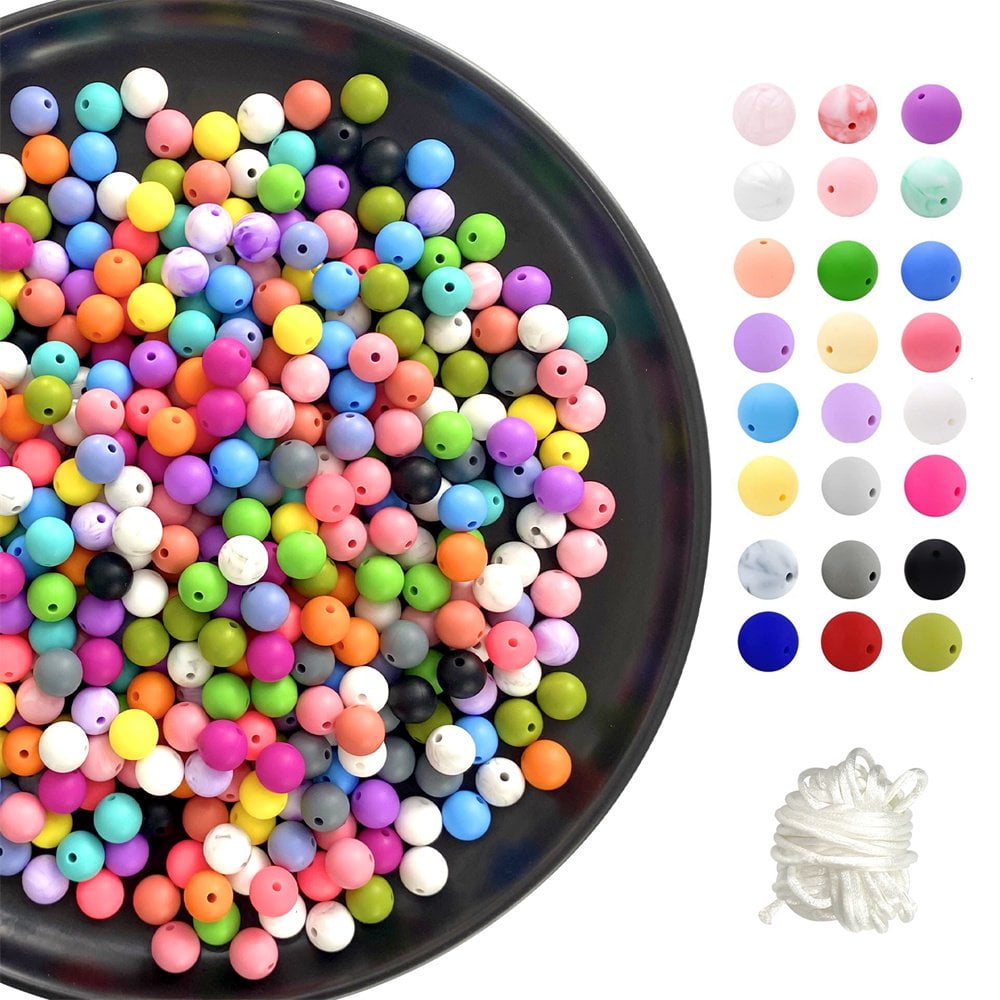86-592-5659128 (to8016)
anna@xmydx.com86-592-5659128 (to8016)
anna@xmydx.com
2025-05-08 16:53:54

When choosing beads for jewelry, crafts, or industrial applications, two popular options are acrylic and silicone beads. While both materials are synthetic, they differ significantly in composition, performance, and suitability for specific uses. This article dives deep into the differences between acrylic and silicone beads, helping you make an informed decision based on your needs.

Acrylic beads are made from polymethyl methacrylate (PMMA), a rigid thermoplastic polymer. Known for their glass-like clarity, acrylic beads are lightweight, transparent, and often used as affordable alternatives to crystal or glass beads. They are typically molded into shapes like rounds, cubes, or geometric patterns.

Silicone beads are crafted from silicon-based polymers, which are flexible, rubber-like materials. Unlike acrylic, silicone is a thermoset polymer, meaning it retains its shape and properties even under high temperatures. These beads are often used in baby teething products, industrial seals, or decorative jewelry due to their softness and durability.
Key Difference:
Key Difference:
Silicone beads excel in flexibility and heat resistance, while acrylic beads offer rigidity and clarity.
Key Difference:
Silicone beads are more chemically and environmentally stable, especially in harsh conditions.

[Image: Silicone beads in baby teething toys]
![]()
Key Difference:
Silicone beads are versatile for safety-critical and industrial uses, while acrylic beads focus on aesthetics.
Key Difference:
Silicone beads are the safer choice for food-related or child-safe products.
Key Difference:
Acrylic beads are budget-friendly, while silicone beads justify higher costs with superior performance.
Key Difference:
Silicone beads require minimal maintenance and are easier to clean.
Key Difference:
Neither material is perfectly sustainable, but silicone’s durability makes it a greener option in the long run.
Yes! Silicone beads are non-toxic, BPA-free, and designed for infants to chew on safely.
No. Acrylic melts at high temperatures, while silicone beads can withstand oven heat.
Acrylic beads are ideal for decorative jewelry, while silicone beads suit functional or durable designs.
No. Their non-porous surface resists stains from food, liquids, and makeup.
[Image: Table summarizing acrylic vs. silicone bead differences]

Choosing between acrylic and silicone beads depends on your priorities:
Both materials have unique strengths, but silicone beads offer broader versatility and performance in demanding environments.
By understanding the differences between acrylic and silicone beads, you can select the perfect material to meet your project’s needs!
© 2016 XIAMEN YIDEXIN SILICONE RUBBER INDUSTRIAL CO.,LTD All Rights Reserved dyyseo.com
Online Contact
 86-592-5659128 (to8016)
86-592-5659128 (to8016) anna@xmydx.com
anna@xmydx.com sallyliao1985
sallyliao1985 xmydx02
xmydx02 +86-13606037597
+86-13606037597top